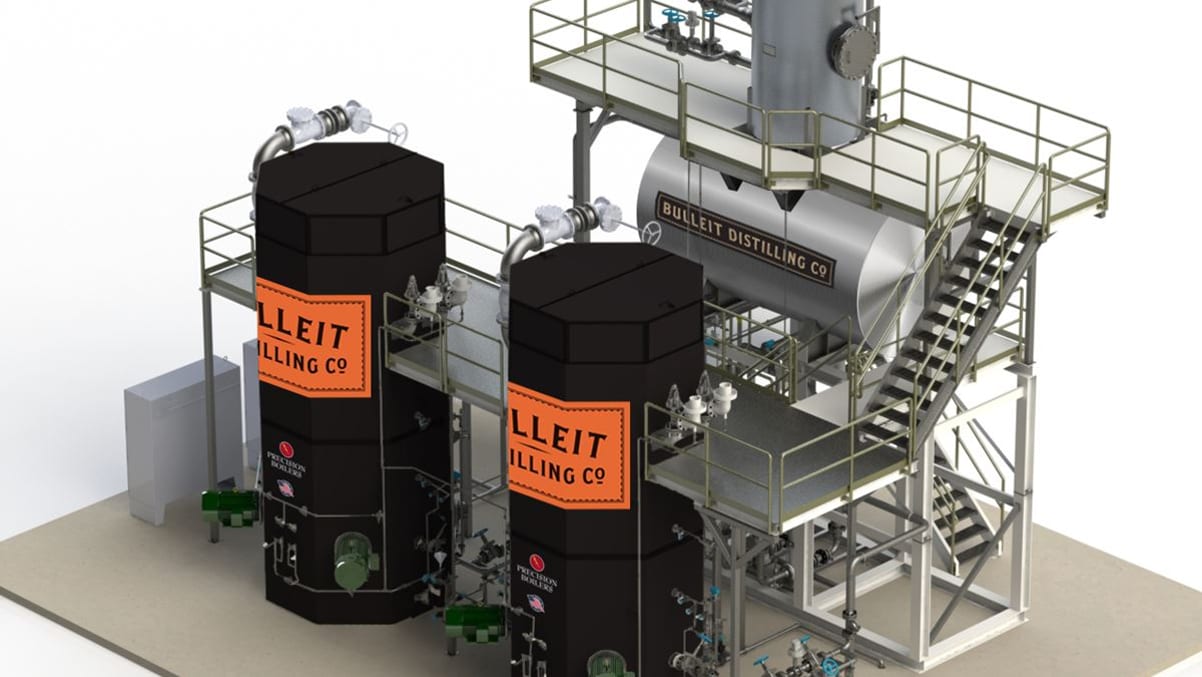FA&M 2021 Conference Highlights
automation & sustainability

Kristen Kazarian, managing Editor
Sustainability has become a necessary part of plant design and construction projects. The next step is leveraging your automation capabilities to help meet—and exceed—sustainability goals
Automating a sustainable strategy
Food Engineering’s FA&M Conference, held virtually this past September, included a presentation surrounding manufacturing plant sustainability—and how automation can help.
Lance Musson is the controls and automation manager for Diageo North America, at the company’s Brand Technical Center in Plainfield, Ill. Musson has worked on capital projects and all the different 11 sites. He’s also been involved with design layouts, including installing brewery expansions. And most recently, he has spent a little over two and a half years helping develop and now commission the Bulleit Carbon Neutral Distillery in Lebanon, Ky.
Operating in more than 180 countries around the world, Diageo is a global leader in the alcohol beverage industry with brands including Johnnie Walker, Crown Royal, Bulleit and Buchanan's whiskies, Smirnoff, Cîroc and Ketel One vodkas, Casamigos, DeLeon and Don Julio tequilas, Captain Morgan, Baileys, Tanqueray and Guinness.
Bulleit's Carbon Neutral Distillery in Lebanon, Ky. Photos courtesy of Diageo

Diageo’s future
As part of the presentation, Diageo shared its sustainability goals in a brief video. “We are committed to a low-carbon future. It's vital that we all act to resolve the increasing flow of emissions and start to heal the wonderful world we all live in,” said Musson.
Diageo is committed to reducing carbon emissions and their sustainability goals to achieve carbon neutral operations by 2030. It’s part of Diageo’s Society 2030: Spirit of Progress, a 10-year action plan to help create a more inclusive and sustainable world.
The beverage giant already has halved the carbon emissions from their operations around the globe and they are now pushing to become net zero with a goal by 2030. Diageo will shortly cross that frontier again with the new Bulleit carbon neutral distillery. One of the largest of its kind in North America, the new whiskey distillery will operate using 100% renewable electricity, zero fossil fuels for production and virtual metering technology.
Lance Musson, controls and automation manager,
Diageo North America.

Biting the Bulleit
This carbon-neutral distillery is powered by 100% renewable electricity and designed for highly efficient water usage. With the capacity to produce up to 10 million proof gallons per year, the site is distilling Bulleit and eventually a variety of bourbon and American whiskey brands. Using electrode boilers, the site will utilize a mix of renewable energy sources to power 72,000-sq.-ft. two-story dry house and warehousing facilities. “The distillery was built on 144 acres, strategically selected because of the available utilities and industrial zoning,” said Musson.
The distiller was built to be extremely compact with the thought that only 30 employees would run the entire operation, split across separate crews. There are only about six to eight people working in the site at any given time. Because the staff is so lean, accessibility and proximity to the equipment was a key consideration, keeping everything within a compact distillery. Minimal distance between areas reduces the need of wasted movement to sustain operations, and most importantly, the automation in the facility allows for the team to be in full control with visibility of all the processes from a single control room location.
At the Bulleit distillery, 100% of the steam on-site used for the cooking distillation and drying processes are generated by the electrode boilers, which are powered by renewable electricity.

There is room on the site for 18 warehouses. “One of our key sustainable achievements at the site was the electrification of operations, including the electrode boilers. The electoral boilers will enable the avoidance of direct carbon emissions that would normally be generated by the use of fossil fuel-fired boilers, electrode boilers also offer benefits that include reduced noise pollution and the reduction of other air contaminants,” explained Musson.
Automating the distilleries
He added that 100% of the steam on-site used for the cooking distillation and drying processes are generated by the electrode boilers, which are powered by renewable electricity. Diageo also focuses on energy efficiency, which will be optimized in the new electrode boilers by using utility monitoring software developed to histories and energy usage, and they will have the ability to analyze that for optimization later.
All of the distillery’s exterior lighting is solar powered, and all onsite interior lighting is light-emitting diode LED. The warehouse interior lighting is automatic and only turns on and off during loading and unloading activities. Diageo also lowered roofs in the design to minimize heating and cooling requirements. With regard to electricity, Musson says they implemented long-term contracts with the local utility to allow for the purchase of zero greenhouse gas emission electricity from certified renewable sources.
Water savings design has also been built into the distillery. The site is designed to be industry leading in efficiency and minimization of water usage by strategically placing meters in history, raising the data, Musson added. The distillery was immediately able to capture water usage and look for opportunities to generate and reduce the use of water and generate savings. The site is also committed to sending zero waste to landfills. Once operational, the site is designed to minimize the use of materials and waste through reuse and recycling. Any residual waste will not be sent to a landfill. They are also using all-electric vehicles at the site, including forklifts, and charging on-site with renewable energy.
“We wanted people to be focused on ways to improve efficiency, reduce energy consumption and of course, make a whole lot of bourbon!”
— Lance Musson, controls and automation manager, Diageo North America, Brand Technical Center
